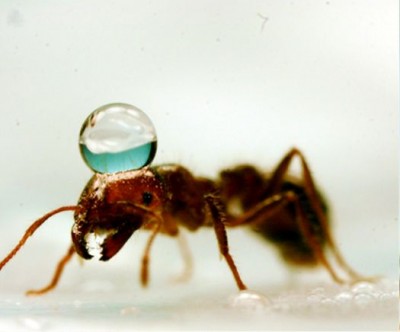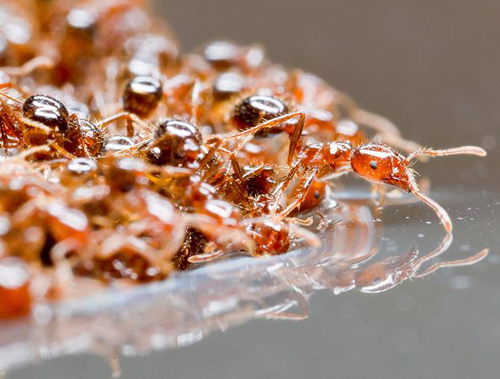| |
Ant raft
In the first serious study of the physics of fire-ant rafts, mechanical engineer, Nathan Mlot, and his colleagues have described how the insects form floating, waterproof islands. It's the ultimate vehicle for an emergency flood escape. It can assemble itself in about 100 seconds, and keep thousands to millions of passengers safe and afloat for days, even weeks.
Fire ants like many species of ants make their homes underground. They are composed of a complex network of passageways and chambers. During floods or heavy rainstorms, these passageways will full up with water and force the ants to evacuate their home. Instead of scattering individually, fire ants (Solenopsis invicta) have the unique ability to gather together as a colony and form rafts on the surface of the rising waters using their own bodies. Even though ants' exoskeletons naturally repel water, a lone ant dropped in water will flounder but, together, it is this hydrophobic nature which allows them to repel water and remain afloat as a raft. Fire ants link together using their jaws, little claws on the ends of their legs, and a small pad on the end of their foot. They form a layer of ants on the bottom of the raft which serves as a base for the rest of the colony to “comfortably” mill around on. When fire ants are gathered into a group, they exhibit fluid like properties such as being able to flow from one container to another. Moreover, due to the tightly knit “weave” of the ants, water cannot penetrate the raft thus allowing the ants to stay dry. This water-tight nature provides the raft with the buoyancy force necessary to float, enabling the ants to remain in the raft formation for weeks if necessary.
Links:
ant raft video at wired.com
nathan mlot and the ant raft research project
|
|
|


